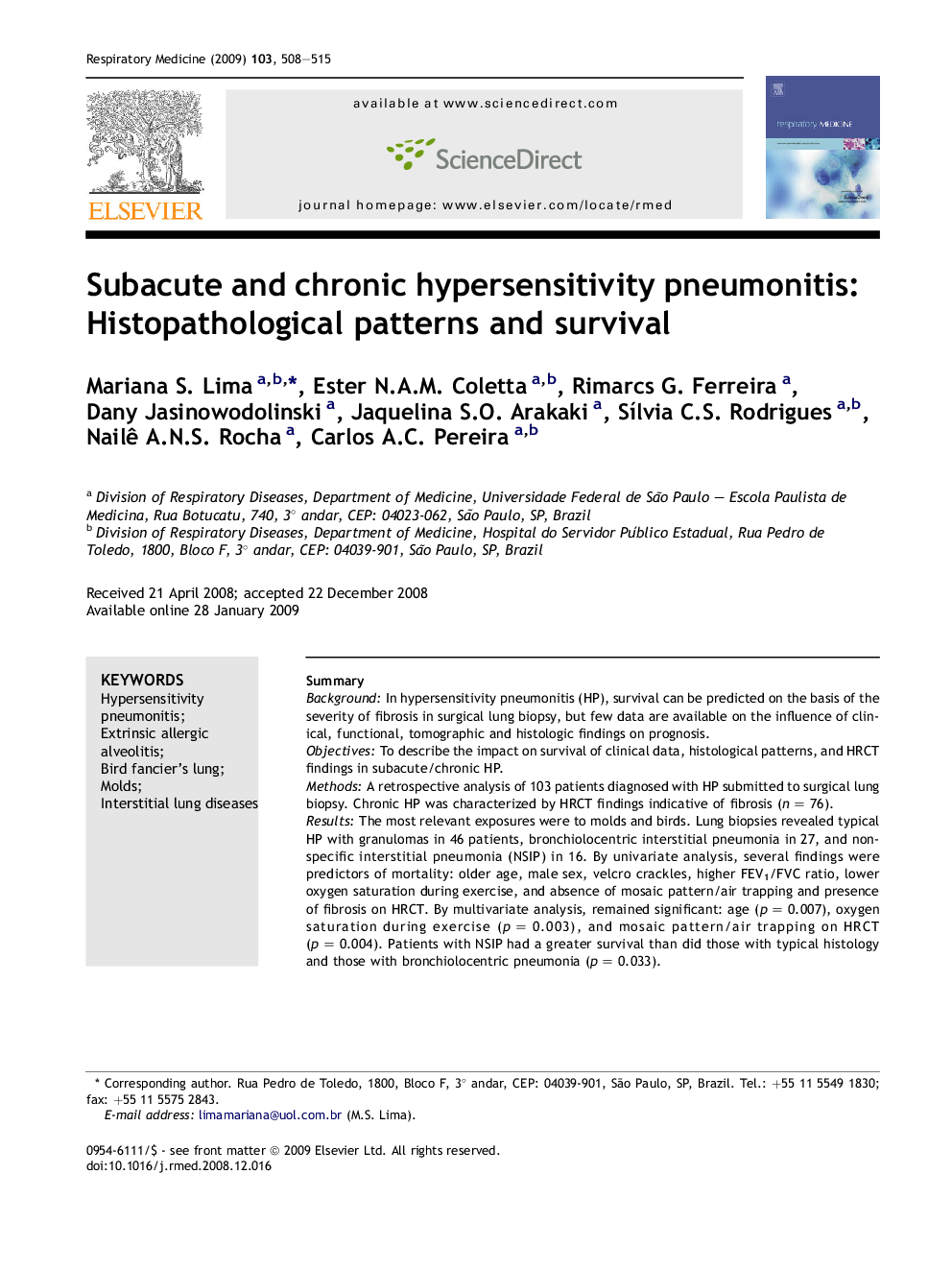| Article ID | Journal | Published Year | Pages | File Type |
|---|---|---|---|---|
| 4210911 | Respiratory Medicine | 2009 | 8 Pages |
SummaryBackgroundIn hypersensitivity pneumonitis (HP), survival can be predicted on the basis of the severity of fibrosis in surgical lung biopsy, but few data are available on the influence of clinical, functional, tomographic and histologic findings on prognosis.ObjectivesTo describe the impact on survival of clinical data, histological patterns, and HRCT findings in subacute/chronic HP.MethodsA retrospective analysis of 103 patients diagnosed with HP submitted to surgical lung biopsy. Chronic HP was characterized by HRCT findings indicative of fibrosis (n = 76).ResultsThe most relevant exposures were to molds and birds. Lung biopsies revealed typical HP with granulomas in 46 patients, bronchiolocentric interstitial pneumonia in 27, and non-specific interstitial pneumonia (NSIP) in 16. By univariate analysis, several findings were predictors of mortality: older age, male sex, velcro crackles, higher FEV1/FVC ratio, lower oxygen saturation during exercise, and absence of mosaic pattern/air trapping and presence of fibrosis on HRCT. By multivariate analysis, remained significant: age (p = 0.007), oxygen saturation during exercise (p = 0.003), and mosaic pattern/air trapping on HRCT (p = 0.004). Patients with NSIP had a greater survival than did those with typical histology and those with bronchiolocentric pneumonia (p = 0.033).ConclusionsA wide range of histological features are found in HP. Typical findings are seen in 45% of cases. Other common patterns are NSIP and centriacinar lesions. Survival is better in patients with NSIP and worse in those with older age, desaturation during exercise, and absence of mosaic pattern/air trapping on HRCT.
